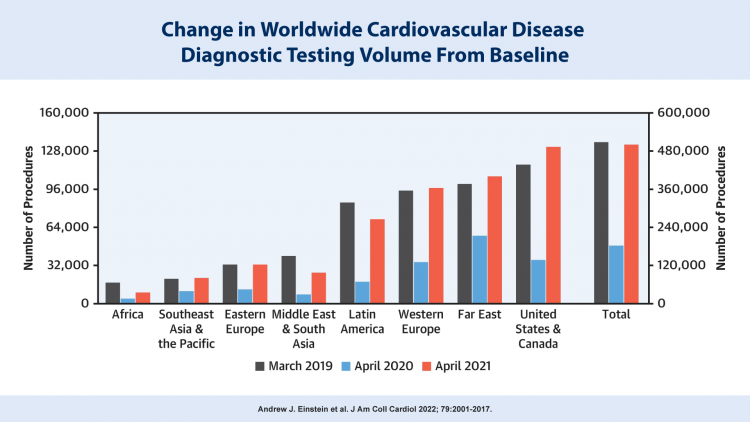More than two years ago, in March 2020, the WHO declared the COVID-19 outbreak a pandemic. On the outset of the pandemic, the IAEA conducted a worldwide survey that quantified the global decrease in cardiovascular diagnostic procedures from 2019 to 2020. The survey found standard diagnostic procedures for heart disease, such as echocardiograms, angiographies and stress tests, decreased by 64 per cent from March 2019 to April 2020.
Since then, by April 2021, diagnostic procedures in low-income countries had only recovered by 30 per cent and in lower-middle income countries by 46 per cent, according to a follow-up survey conducted by the IAEA using the International Research Integration System (IRIS). The results, published in May 2022 in the Journal of the American College of Cardiology, evaluated the volume and types of cardiac imaging from 669 inpatient and outpatient centres in 107 countries. Upper-middle-income countries had recovery – and growth – rates of 99 per cent, and high-income countries recovery and growth rates of 108 per cent.
“This decline in cardiac diagnostic imaging has the real potential to lead to worsened cardiovascular outcomes in low- and lower-middle income countries in the years ahead and, thus, increased disparities in cardiovascular health worldwide,” said Andrew Einstein, a cardiologist and researcher at Columbia University in New York. Einstein and Paez were co-authors of both studies.






